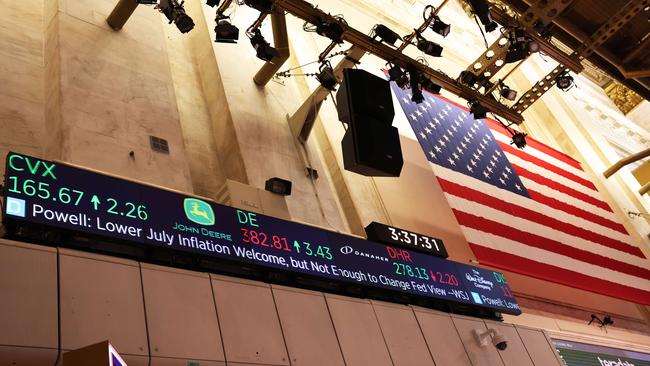
On Tuesday the Reserve Bank will lift its official interest rate for the fifth time in four months. It will be the fourth increase of 50 points – half a per cent – in a row, after the RBA started with an ice and promise-breaking 25 points.
Then, just over two weeks later the ‘Big Guy’, the US Fed, will also raise its official rate and also for the fifth time, having started from the same all-but zero.
In the Fed’s case, it started raising two months and one meeting ahead of the RBA. But then it had to. It should have started hiking last year; our RBA should have started in February.
In the Fed’s case the last two hikes were 75-pointers; and the big question for what happens in two weeks is whether it sticks with another 75-pointer, as it should, or goes back to a 50-pointer.
The question was playing out in real time on Wall St overnight Friday after the release ahead of trading of the latest month’s jobs numbers.
There’s an intense statistical two-step going on between the US monthly jobs data and the monthly inflation report – as for what they say about the developing dynamics in the US economy, and so what the Fed might do about rates.
Does the inflation data show the first signs of it coming down? Does the jobs data show the first signs of the economy weakening? And what’s the ‘real story’ when they – if they – point in opposite directions?

Initially, opinion on the street read signs of slowing in the jobs detail, so the Dow opened up around 200 points.
By day’s end the opinion had swung more to somewhere between neutral and seeing continued economic strength, and the Dow finished down more than 300 points.
That’s the sort of thing that’s going to be happening all the way to next week’s US CPI number and on to the Fed meeting in a fortnight, when we move from ‘what the Fed will do’ to what it actually does.
Even more critically, whether it’s 50 or 75 points will be the pivotal signal to what the Fed is going to do through the last two meetings of the year and then into 2023.
That will drive Wall St. Big time.
It will drive it both immediately. You could see a 1000-point-plus fall on the day; you could see a 1000-point leap.
And then daily, weekly, monthly, into 2023.
That in turn will drive our sharemarket. Immediately, as we wake up that Thursday morning; and then in the same way into 2023.
The Fed and its rate moves are the key to our sharemarket. The RBA and its moves are all- important for our property market – and construction, especially residential but also commercial.
What the RBA does is all-but irrelevant to our sharemarket.
But also, critically, the RBA almost never thinks about, and so is generally not influenced, by what might happen in the property market, in coming to its decisions.
This makes it – to its great credit – very different to the Fed.
For at least the last 30 years – since former legendary and completely overrated Fed head Alan Greenspan made his “irrational exuberance” comment – the Fed has always, always, been hostage to Wall St.
The RBA is not similarly hostage to the property market.
That’s why I found another publication’s screaming headline this weekend so exquisitely, utterly missing the point, inane: “RBA to inflict more mortgage pain despite falling property prices”.
That’s like writing: “Police to persist with enforcing .05 laws despite falling pub grog sales”.
Apart from that basic stupidity, the headline reflects that underlying assumption that higher interest rates is a one-way all-pain street; and that it’s un-Australian if property prices are not always and only rising.
Only one in three Australians are paying off a mortgage on their own home.
One in three are renting and over time get hit with higher rents on higher property values. The wannabe first-home buyers among them might get a chance to buy.
The remaining one in three are mixed winners and losers from rising rates.
But to the extent that they ‘lose’, it’s just a small portion of the mammoth tax-free gains they have mostly already pocketed from property prices galloping through the 21st century so far.
Recent buyers go into negative equity. But a wide range of dynamics – especially migration – will get prices rising again into the medium term faster than normal goods and services inflation.




Two huge days are coming up for investors this month – the first of spring and of footy finals in Australia, for America and Europe the start of the countdown to winter and a very, very bitter and biting one, especially for Europe.